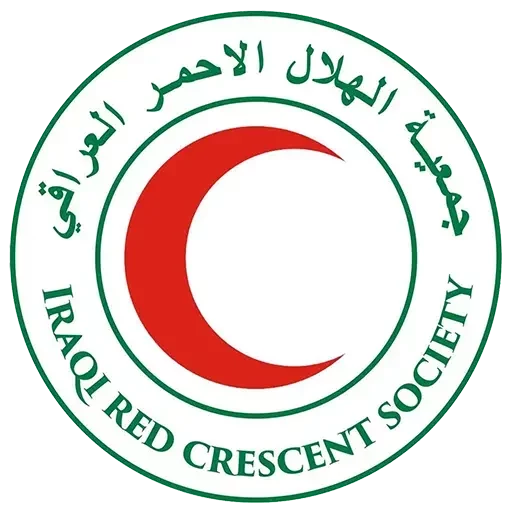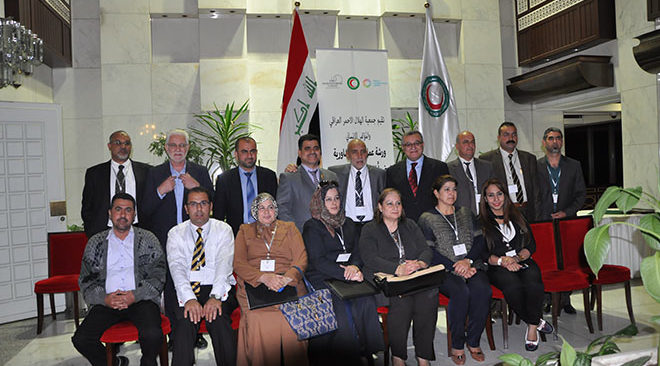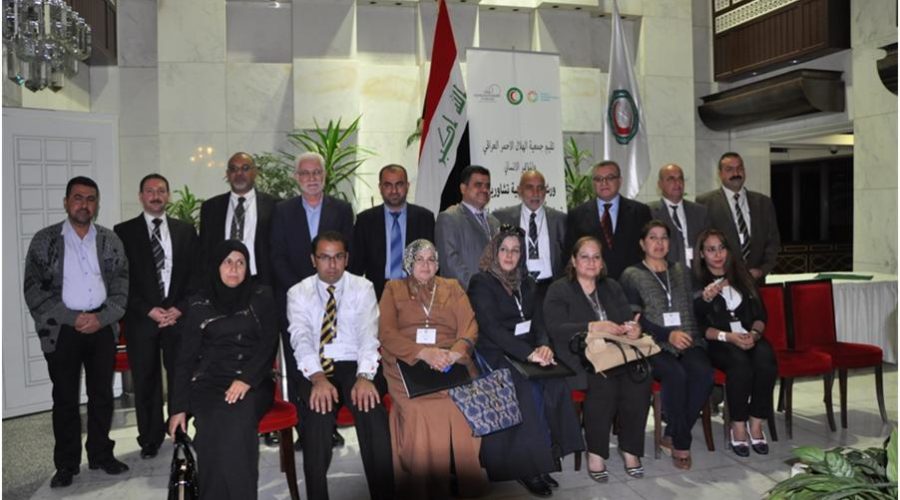Iraqi Red Crescent Society held a consultative workshop in preparation for the World Summit humanity
Iraqi Red Crescent Society held a consultative workshop in preparation for the World Summit humanity in cooperation with humanitarian Forum of the United Nations, in Baghdad /Al- Rashid Hotel on Thursday. The workshop was attended by Dr. Yassin Almamori / the President of the Iraqi Red Crescent , Dr. Hany El Banna / Chairman of the Forum humanitarian and representatives of Iraqi NGOs, International Organizations, Parliament and the Ministries of Human Rights and Displacement General Secretariat of the Council of Ministers as well as the presence a number of activists working in the field of human rights. The workshop was highlight on humanitarian issues in Iraq and the region country for the development of future plans and programs to address the enormous humanitarian challenges and create partnerships between humanitarian organizations, both NGOs and International Organizations with relevant government agencies to facilitate the procedures related to work.
The participants in the workshop call upon to decisions about the activities of humanitarian work in terms of the role of governments in the humanitarian response and the establishment of cooperation between the humanitarian actors on the international and national Foundations as well as strengthening the capacity of institutions and peoples generally crises and challenges hang on through the development of policies for disaster preparedness and crisis and conflict by organized database and an assessment of the humanitarian needs.
The conferees came out with several resolutions providing for several topics, including:
Conference resulted in several decisions of the states on several pivot as follow:-
The first pivot :- the activities of Humanitarian work
Firstly:- The role of governments in humanitarian response:-
- Building partnerships between government and the private sector
- legislation Supreme National Corporation Law for Disaster Reduction
- develop a national strategy for disaster management which is national directions which are related in preparedness and responding to disasters, whether governmental or non-governmental and determine the duties and tasks and timings of time to enter each team member.
- Capacity building stakeholders relief and private institutions of NGOs.
- Highlight on the role of religious institutions in the provision of aid.
Secondly : – cooperation between humanitarian actors on the level of international and national :
- The establishment of the Coordination Council is composed of the governourates all stakeholders level.
- The involvement of relevant institutions in disaster response with the government in the development of the organization to the process of financing laws.
- The media focus on the donors of the business, traders and institutions and others to encourage a culture of donation and encourage government agencies to grant tax relief to traders donors.
- The establishment of local committees and monitoring teams in residential neighborhoods to identify the existence of the affected from disasters and their needs.
- The involvement of those affected from the disaster to clarify the basic needs especially women need, taking into consideration the values and cultures.
- The use of regulatory bodies to spot light on the violations that may accompany the distribution of aid and hold negligent.
- Activating the role of non-governmental organizations in the control and the need for coordination between them and the control of state institutions.
The first theme: – Reduce risk and vulnerability to her
Firstly : To strengthen the capacity of institutions and people to withstand the crisis
- Put the policy of preparedness for natural disasters or crises or conflicts through the
data and assess the base.
- Optimum utilization of resources.
- Community participation in the planning, knowledge of the needs and take advantage
of the religious institutions in promoting a culture of volunteerism and make it part of
the curricula of the first stages of study.
- involve the media in spreading awareness of the disaster to happen before, during and
after a disaster.
- find the post-crisis such as the return of displaced persons to their home areas olutions.
- conduct a field survey of the capabilities and competencies of the displaced to exploit.
- Put a future plan for the transition from relief to development and coordination
between relief and development of civil institutions and government stage.
Secondly: – raise the risk of rates in urban areas
- The omission of the government for the development of rural areas, leading to the displacement direction from the countryside to the city.
- Non-rural product support by the government leads to increased immigration.
- Unemployment may lead to the spread of crime and violence.
- Provide jobs for the displaced to the city so as not to affect the local economy.
Third :- ability of manage shocks predictable recurring future
- Communicate with specialized government departments to predict natural disasters.
- A security interest in the border provinces to curb violations.
- Dependence on developed countries and expertise in early warning.
- Youth training on traditional information in predicting the climate.
Fourth: – How to deal with the recurring crises
- Build the capacity of local civil institutions.
- Coordination between central and local institutions and the work of an action plan for the transition from relief to development.
- Create infrastructure such as mosques, schools and markets to stabilize the displaced.
- Awareness of the donor and the government of the post-disaster planning and resolve crises for the stability of the displaced.
- Provide mental health kits for the displaced.
The third theme : the transformation and innovation
First: with respect to the culture of the affected communities or midwife vulnerable.
- Utilization of human resources for the community.
- The development of the capacity of communities to respond.
- Take advantage of the resources of the civil societies.
- Possibility of supporting civil society organizations and development capabilities by governments
Second: – analysis of the humanitarian reality.
- Emphasis on scientific methods to learn the human reality.
- The use of modern methods in the renewal needs a reality check.
- Put proactive plans to cope with potential disasters.
- Establish mechanisms enhanced modern ways to communicate with beneficiaries.
Thirdly – the use of modern technology
- Activating the use of modern technology and work to transfer and share with local
communities.
- Strengthen cooperation and communication with the various media through the creation of
partnerships.
- Use social media to serve the humanitarian work.
- Find partnerships with celebrities and dignitaries community and clergy.
Forth theme : peoples necessity service during conflicts
First – to protect civilians
- Strengthen national and international legal protection of civilians.
- educate communities to respect international conventions and national laws and legislation on
the subject.
- Activating accountability in humanitarian violations.
- Activate the role of organizations and regulatory bodies in the documentation and control
violations.
- Develop strategies and measures by governments and organizations to cope with emergency
conditions.
- Establish mechanisms and programs to help those affected who have been subjected to abuse.
- The need for inclusiveness to accountability.
- The need to facilitate the procedures relating to refugees across the border.
Secondly – the delivery of humanitarian aid
- The need for mechanisms to secure aid for those affected roads.
- Focus on the intervention of the security and civilian rescue teams.



